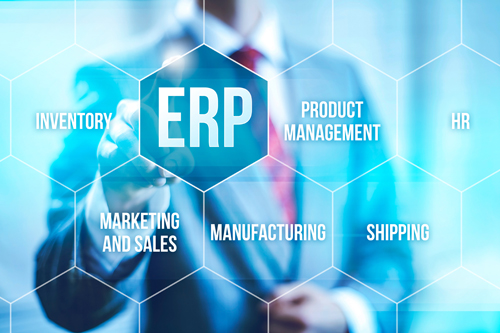Moving ERP systems is no easy task, and which system to move to is not…

Acumatica Cloud ERP – Benefits Of The Cloud
Cloud computing (“the cloud”) has quickly become one of the leading technology topics in the world, despite the fact that few people really understand what it is and how it impacts their technology choices today.
Here is what you need to know about cloud computing to help you make informed decisions about your IT deployment and infrastructure.
So, what exactly is the cloud?
“Cloud” is a generic term for computing resources that are provided from a remote location. The term covers everything from storing emails or photos on a commercial service, like Google or Snapfish, to remotely hosting and maintaining the entire computing infrastructure of a major international corporation from a remote data center.
At its most basic, cloud computing is all about renting storage and/or processing resources rather than buying and maintaining them in-house (on-premise).
Business applications that run in the cloud
Major business applications (like ERP and CRM) that run in the cloud are often referred to as “cloud-hosted” or “cloud-based” software. They are usually (but not always) provided to companies using the Software-as-a-Service (SaaS) licensing model.
SaaS licensing is based on a monthly fee, on a pay-for-what-you-use basis, and includes the majority of the IT and software costs. There is no up-front software license fee. There is no server hardware, operating system or software to buy and install on-premise.
The differences between SaaS and on-premise business applications
Cloud / SaaS deployment is very different from traditional on-premise installations from a financial perspective. Traditional software licensing involves an up-front capital cost for the software license and purchase and installation of the hardware, operating system, database, etc. With SaaS, all operating costs are built into the monthly fee.
Some suppliers and advocates claim that implementation is much faster with cloud/SaaS ERP. While there are some savings in not having to install the hardware and software, all remaining implementation tasks apply equally to on-premise and cloud/SaaS implementations.
On-premise implementations also require on-going support and maintenance costs, including: backups, disaster recovery, performance tuning of the servers, load balancing the applications in peak times, and ensuring business level security is in place. With the cloud, these support and maintenance costs are typically absorbed into an SaaS monthly fee, usually at a savings.
Cloud / SaaS is also extremely scalable. As a company and its computing needs grow and change, you can add or remove users, add hardware, etc. instantly and painlessly with a phone call to your provider who will change the resources and adjust the monthly fee accordingly.
SaaS deployment options: Single-tenant or multi-tenant
There are many variations of cloud-based SaaS applications, but the majority can be classified as either single tenant or multi-tenant.
Single-tenant SaaS is hosting of the very same kind of applications that you would get in a traditional on-premise purchase. Your applications and data are separately installed and managed in the cloud and accessed through the Internet or leased lines.
In multi-tenant SaaS, there is one instance (one copy) of the software and each user company has its own separate (and secured) database that includes application tailoring for the way they want to use the software. On the plus side, all users are always up-to-date with the latest enhancements and fixes, since they are all operating with the same software. The downside is that user companies have limited control over the software they depend upon and modifications and interfaces to outside systems can sometimes be problematic.
With on-premise ERP software deployment, and slightly less so with single-tenant SaaS, you are in control of the implementation, configuration, and support. You can modify and interface as appropriate. You control the upgrade cycle. With multi-tenant, these responsibilities are shared with your provider according to the terms of the specific contract arrangement.
Beware of legacy applications “re-engineered” for the cloud
Beware of “cloud washing” and “faux cloud” adaptations of legacy applications that purport to be re-engineered for cloud deployment. Many such products require client software on your PC or device. Others use a special server between the application and the user to serve up web pages to the client. Neither approach delivers the speed and responsiveness of a true cloud design. True cloud applications have no application code on the client device except a browser. They are designed and built for the web. The screens are responsive (required for a mobile workforce).
Choosing the right deployment option for your company
The cloud/SaaS offers an attractive alternative for many companies but it is not the ideal approach in all situations. Companies should consider all available deployment options, but only after selecting the right software and service provider(s) based on system functionality and fit, supplier reputation and financial strength, the support team, and other “due diligence” investigations to determine that you have chosen the right solution.






